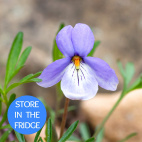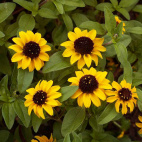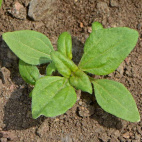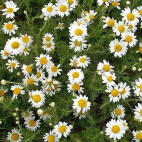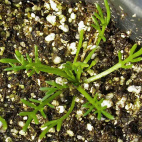Color
Availability
USDA Zone
Region
Type
Duration
Season
Germination
Soil
Sunlight
Height
Use
Narrow Your Search
Color
Availability
USDA Zone
Region
Type
Duration
Season
Germination
Soil
Sunlight
Height
Use
Wildflower Seeds - Northern Region
The Northern region is home to our Canadian friends in the eastern provinces, as well as the northern-most part of the Eastern US. This area is characterized by a long, cold winter with lots of snow, and a short humid summer that only lasts about 3 or 4 months. Most of the area is classified as a UDSA Growing Zone 4 or less, and the species that grow here have interesting ways to perpetuate themselves in spite of the short growing season. There are a lot of forests and wetlands in this region, so adequate moisture is hardly ever a problem. Look up your growing zone to make sure that the Northern wildflower seeds that you want to grow are winter hardy. Alternatively, just order annual flower seeds online so that the plant does not need to make it through the winter, but can reseed itself and come back from seed the next year.
-
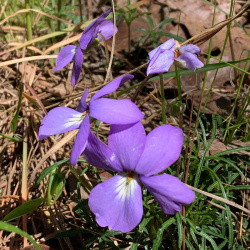 Store in the FridgeOut Of Stock
Bird's Foot Violet Seeds
Viola pedata
A stunning spring wildflower, this wildflower has been called the queen of violets. The petite plant grows just 4" tall but has rather large blooms.Quick Viewx
Store in the FridgeOut Of Stock
Bird's Foot Violet Seeds
Viola pedata
A stunning spring wildflower, this wildflower has been called the queen of violets. The petite plant grows just 4" tall but has rather large blooms.Quick ViewxBird's Foot Violet Seeds
Viola pedata
A stunning spring wildflower, this wildflower has been called the queen of violets. The petite plant grows just 4" tall but has rather large blooms.
$3.75 Pkt - $80.00 / Oz -
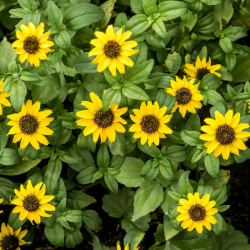 On Sale!
Creeping Zinnia Seeds
Sanvitalia procumbens
Native to Mexico, these fun yellow flowers have brown button-like centers. The trailing habit of this popular annual makes it ideal for hanging baskets, container gardening, or for a groundcover. Sanvitalia Procumbens is also very easy to grow.Quick View$3.48 Pkt - $14.49 / Oz
On Sale!
Creeping Zinnia Seeds
Sanvitalia procumbens
Native to Mexico, these fun yellow flowers have brown button-like centers. The trailing habit of this popular annual makes it ideal for hanging baskets, container gardening, or for a groundcover. Sanvitalia Procumbens is also very easy to grow.Quick View$3.48 Pkt - $14.49 / Oz -
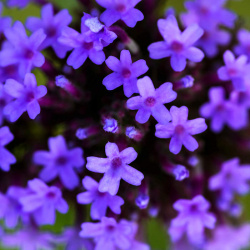 Out Of Stock
Dark Blue Moss Vervain Seeds
Verbena tenuisecta
Originally from South America, these beautiful blue flowers stay close to the ground. Butterflies are attracted to the small blue flowers, so it would be an ideal plant for a small butterfly garden.Quick Viewx
Out Of Stock
Dark Blue Moss Vervain Seeds
Verbena tenuisecta
Originally from South America, these beautiful blue flowers stay close to the ground. Butterflies are attracted to the small blue flowers, so it would be an ideal plant for a small butterfly garden.Quick ViewxDark Blue Moss Vervain Seeds
Verbena tenuisecta
Originally from South America, these beautiful blue flowers stay close to the ground. Butterflies are attracted to the small blue flowers, so it would be an ideal plant for a small butterfly garden.
$2.98 Pkt - $8.93 / Oz -
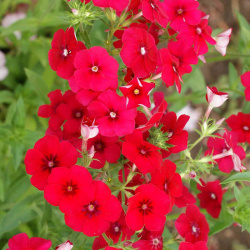 Red Drummond Phlox Seeds
Phlox drummondii
A popular Texas native, this vivid crimson phlox will do its roots justice wherever it is planted. This annual red Drummond phlox is easy to grow and will produce a lot of flowers with minimal effort. The bees and butterflies seem to enjoy hovering over the flowers as well.Quick Viewx
Red Drummond Phlox Seeds
Phlox drummondii
A popular Texas native, this vivid crimson phlox will do its roots justice wherever it is planted. This annual red Drummond phlox is easy to grow and will produce a lot of flowers with minimal effort. The bees and butterflies seem to enjoy hovering over the flowers as well.Quick ViewxRed Drummond Phlox Seeds
Phlox drummondii
A popular Texas native, this vivid crimson phlox will do its roots justice wherever it is planted. This annual red Drummond phlox is easy to grow and will produce a lot of flowers with minimal effort. The bees and butterflies seem to enjoy hovering over the flowers as well.
$3.25 Pkt - $10.57 / Oz -
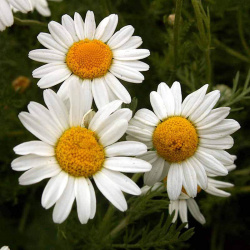 Roman Chamomile Seeds
Anthemis nobilis
Traditionally used as a ground cover, chamomile lawns still exist at Buckingham Palace. The small daisy-like flowers give off a sweet, fruity fragrance, and the greenery grows in a dense mat.Quick View$3.48 Pkt - $20.59 / Oz
Roman Chamomile Seeds
Anthemis nobilis
Traditionally used as a ground cover, chamomile lawns still exist at Buckingham Palace. The small daisy-like flowers give off a sweet, fruity fragrance, and the greenery grows in a dense mat.Quick View$3.48 Pkt - $20.59 / Oz
The Northern region is home to our Canadian friends in the eastern provinces, as well as the northern-most part of the Eastern US. This area is characterized by a long, cold winter with lots of snow, and a short humid summer that only lasts about 3 or 4 months. Most of the area is classified as a UDSA Growing Zone 4 or less, and the species that grow here have interesting ways to perpetuate themselves in spite of the short growing season. There are a lot of forests and wetlands in this region, so adequate moisture is hardly ever a problem. Look up your growing zone to make sure that the Northern wildflower seeds that you want to grow are winter hardy. Alternatively, just order annual flower seeds online so that the plant does not need to make it through the winter, but can reseed itself and come back from seed the next year.






